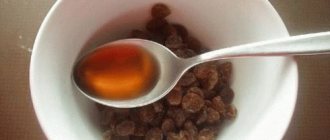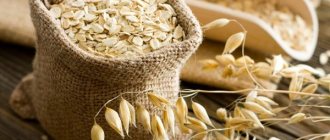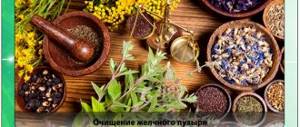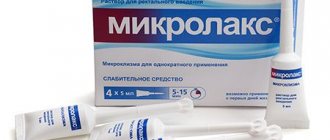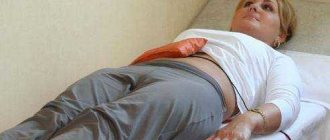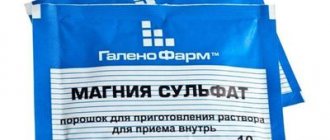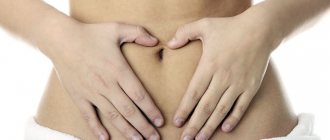How to understand that your liver hurts?
The organ itself (liver) cannot hurt because it lacks nerve endings. And only the capsule in which the liver is located hurts. Here are the main signs that may indicate disturbances in the functioning of this organ:
- Periodically, aching or nagging pain appears in the right side.
- Feeling of heaviness after eating fatty, salty or fried foods.
- Frequent belching or heartburn with a characteristic bitter taste in the mouth after eating.
- Darkening of the color of urine.
- Hemorrhage (accumulation of blood leaking from blood vessels into body cavities or surrounding tissues)
- Dyspepsia (constipation, diarrhea, bloating and gas, etc.).
- The skin of the face and the whites of the eyes acquire a yellowish tint.
- Appetite worsens.
- A person becomes lethargic and apathetic (with serious liver diseases).
- A yellow or white coating appears on the tongue.
In addition to liver pathologies, pain in the right side can be caused by diseases of neighboring organs (pancreas, gallbladder, etc.).
pain in the right side may be accompanied by these symptoms
Causes of pain
Pain in the liver can be caused by both existing pathologies and indirect factors (medicines, alcohol consumption, etc.). The main causes of hepatic colic include:
- Poor nutrition. Doctors say that frequent consumption of spicy, salty and fatty foods puts a serious strain on the liver. Drinking alcohol falls into this same category (read more about the symptoms and treatment of alcohol poisoning.
- Long-term use of medications (especially analgesics) that have a negative effect on the functioning of the liver.
- Hepatitis B and C. In such cases, vague, tolerable pain is observed.
- Liver cancer. A distinctive feature: the pain does not go away even after taking painkillers and antispasmodics.
- Cirrhosis of the liver (the structure of the organ is gradually destroyed). Characteristic symptoms: sudden weight loss, periodic pain in the abdomen and right side, lack of appetite, etc. In the initial stages, the disease is asymptomatic.
- Steatosis (fatty infiltration of the organ, i.e., adipose tissue is formed, stretching the capsule).
And since in different cases the symptoms are similar, to establish the true cause it is necessary to consult a specialist.
Constant pain
If the liver aches on a constant basis, the patient is usually diagnosed with hepatitis. The person experiences heaviness in the right side (especially after eating fatty foods). When changing body position, pain persists.
Pain after eating
Pain after eating indicates problems with the gallbladder, stones in which prevent the flow of bile into the duodenum. This pain is localized in the right upper abdomen and is often spastic in nature.
Pain at night
Pain in the liver at night is due to the fact that lying down increases blood circulation in the organ, which leads to increased pressure in the capsule and causes discomfort.
The difference between liver pain and other pains
Discomfort in the liver can easily be confused with pain in neighboring organs (gall bladder, kidneys, pancreas), etc. A distinctive feature in this case is the sensation of nagging or aching pain, which intensifies immediately after eating.
Inflammation of the gallbladder
The condition of the liver often depends on the well-being of the gallbladder, the organ in which bile is stored. Inflammation of this organ is called cholecystitis and has acute and chronic forms, as well as calculous (due to the presence of gallstones) and non-calculous.
Signs
The symptoms of chronic non-calculous inflammation in men and women are almost the same as with hepatitis, they do not differ, but unlike it they are more pronounced. Strokes of the clinical picture for cholecystitis are presented:
- dyspeptic symptoms - nausea, unstable stools, heaviness in the epigastric region, flatulence, bitterness in the mouth;
- autonomic dysfunction syndrome (AVS), observed in most patients and manifested by migraines, in women - premenstrual tension;
- subfebrile, within 37 degrees (with catarrhal cholecystitis) or febrile, above 38 degrees (with purulent) body temperature;
- pain in the right hypochondrium, less often in the left and epigastric region, often radiating (radiating) to the scapula, neck or shoulder.
Pain syndrome, as a rule, is provoked by dietary errors, psycho-emotional overload, and alcohol.
With calculous inflammation, severe biliary colic occurs, which intensifies with physical activity.
How to relieve symptoms?
When patients are interested in how to relieve symptoms or what medicine to take for inflammation of the gallbladder or liver, this indicates a complete lack of understanding of the depth of the problem. Relieving pain or eliminating bitterness in the mouth does not mean eliminating the disease.
Of course, when bile-hepatic colic takes a person by surprise, he can be advised to take a pain reliever from the group of antispasmodics. Painkillers are not drugs for inflammation, they are just a way to relieve pain. In order for the pain to no longer appear, you will have to undergo a serious course of treatment, and in some cases, surgery. A treatment regimen must be developed strictly individually by a medical specialist.
What antibiotics can you take?
As for antibiotics, which you can take for inflammation of the gallbladder and liver, doctors approach their choice with extreme caution. Most antibiotics themselves are hepatotoxic factors, so their inappropriate prescription can lead to the opposite effect.
Recommended groups of antibacterial drugs:
- semisynthetic penicillins (contraindicated in liver failure);
- cephalosporins;
- fluoroquinolones;
- nitrofuran derivatives.
Antibacterial therapy is prescribed only if there is complete confidence in the bacterial etiology of cholecystitis.
Other drugs
In the complex treatment of gallbladder inflammation, in addition to antibiotics, the following groups of drugs are used:
- anti-inflammatory;
- antispasmodic;
- antihypoxic and antioxidant drugs;
- immunomodulators and antiparasitics (if necessary);
- choleretic (contraindicated in the calculous form);
- choleretics, hepatoprotectors;
- bile acid preparations (contraindicated in hepatitis).
In parallel, therapy for background (main) diseases must be carried out, so the lists of medications for each specific case may vary significantly.
What can you eat?
The diet for inflammation of the gallbladder is almost no different from the diet of patients with liver problems. The menu for cholecystitis and hepatitis should not contain sour, spicy, fatty, or fried foods. The gallbladder “does not like” foods that increase gas formation - fresh cabbage, legumes, whole milk products.
It is recommended to take what you can eat for cholecystitis from the list of permitted foods for liver inflammation.
First aid for acute pain
For acute pain (colic) in the right hypochondrium, sometimes radiating to the collarbone, it is recommended to apply a heating pad to the lumbar region and give the patient one of the following (1-2 tablets):
- Spasmalgon.
- But-shpu.
- Papaverine.
- Drotaverin and others.
These remedies will help relieve pain in the liver for a while and get rid of spasms. If the above medications are not available in your home medicine cabinet, you can take half a tablet of Nitroglycerin. Take the tablet with water, call an ambulance and lie down until the doctor arrives.
Dietary requirements for liver pain
To avoid recurrence of pain, it is recommended to follow a certain diet that prohibits the consumption of certain foods.
Nutrition for liver pain | |
| Authorized products | Prohibited Products |
| Puree porridge | Sweet baked goods and confectionery |
| Pasta | Mushrooms in any form |
| Lean meat chicken, beef, turkey, etc. | Fatty meat (pork, lamb, etc.), lard and smoked meats |
| Fresh fruit (except pears) | Fried and boiled eggs |
| A small amount of honey (instead of sugar) | Chocolate, candy, ice cream |
| Fresh herbs and vegetables (including boiled), excluding legumes | Rye bread |
| Dried fruits (dried apricots, prunes, raisins) | Full-fat cottage cheese, sour cream, mayonnaise |
| Boiled fish (cod, pike perch, carp, navaga) | Margarine and butter |
| Marmalade, marshmallows, marshmallows | Fatty fish, canned food and meat broths |
| Oat cookies | Nuts |
| Weak tea, compote, jelly and natural juice | Alcoholic drinks, coffee, cocoa, strong tea, sweet carbonated drinks and sour juices |
It is recommended to season salads and first courses with vegetable oils (sunflower, flaxseed, olive, etc.).
Juice therapy as a method of treatment
Drinking juices is a gentle method of treatment, since the beneficial elements in fresh vegetables (mostly vegetables are used in treatment) cleanse the tissues and cells of the liver. Carrot, beet and cucumber juices are usually used for treatment. Vegetables must first be washed, peeled, chopped and processed in a juicer. The finished juice should be diluted with boiled or purified water (1:1). In this case, juices can be mixed with each other (for example, carrot and beetroot).
Add lemon or mint to cucumber juice and drink 1 glass per day (on an empty stomach). Beetroot and carrot take 1 glass 2 times a day half an hour before meals. Course of treatment: 1-2 months.
Turmeric restores damaged liver cells
Turmeric is very effective in the treatment and prevention of the liver and biliary tract. Curcumin, the substance that gives turmeric its yellow color, has numerous medicinal properties. Despite the fact that scientists have only just begun to study curcumin, it already shows great promise in the treatment of a wide variety of diseases.
Here are 2 recipes for its use:
- A simple recipe for use: put 0.25 teaspoon of turmeric in a glass of water, add a spoonful of honey, wait 5 minutes until everything dissolves and drink. You need to take turmeric according to this recipe 3-4 times a day.
- A delicious drink with turmeric: put 1 teaspoon of turmeric, 2 tablespoons of dried cashews and 1 glass of milk in a blender. Mix everything thoroughly and drink. This is the daily dose of turmeric.
Find out more: Turmeric - beneficial and medicinal properties
Medicines for liver pain
For treatment, preparations of plant and animal origin are used. So, the following groups of medications will help relieve pain in the liver:
Medicines based on herbal ingredients
Herbal preparations are used in the case of hepatitis and gallbladder pathologies. The composition of the products includes components of milk thistle, burdock, chicory, etc. These include medications such as:
- Tykveol is a complex preparation made from pumpkin seeds. With regular use, the product helps restore the structure and function of the liver. Tykveol is available in the form of capsules and oil. Average price: 470 rubles (84 capsules) and 760 rubles (per 100 ml of oil).
- Gepabene - contains extract of fumaria officinalis and milk thistle, has an antioxidant and hepatoprotective effect. Used for chronic liver diseases. The drug is available in capsule form. Price: 435 rubles (30 pcs.).
Signs and treatment of liver inflammation
The liver is an important organ responsible for producing bile and detoxifying the body. Any abnormalities in the functioning of the liver cause serious pathologies in the body. A common disease that affects organ tissue and disrupts its functionality is liver inflammation. The pathology develops with equal frequency in women and men; there are cases of incidence in childhood. Inflammatory processes in the liver can occur in a variety of ways - in the form of classic viral hepatitis, or against the background of parasitic invasion, therefore, when determining treatment tactics, it is important to determine the true causes of dysfunction.
Folk remedies for pain
Along with drug therapy, folk remedies are often used (herbal remedies, baths, etc.), before using which it is advisable to consult a specialist.
Herbal teas for liver pain
Herbal decoctions and infusions have a cleansing and restorative effect. And herbal preparations are even more effective, because they contain several types of herbs. Here are some of the popular recipes:
- Monastic tea - a remedy that normalizes the flow of bile, helps cleanse the liver and normalizes metabolic processes. Tea can be purchased either ready-made or prepared yourself. To do this, you need to mix St. John's wort, rose hips, elderberry, elecampane root and oregano in equal quantities, then 1 tbsp. l. Pour the resulting mixture with 2 cups of boiling water and let it brew for 12 hours. Then strain and drink 1/3 glass 2-3 times a day (15-20 minutes before meals). Take within a week.
- Choleretic herbal tea - mix an equal amount of dried calendula flowers, corn silk, horsetail and knotweed. Next 1 tbsp. l. Pour the resulting mixture with 2 cups of boiling water and let it brew for 30 minutes. Strain the finished product and drink 100 ml 3 times a day. Course of treatment: 2.5 months.
Herbal infusions are used not only for treatment, but also for the prevention of liver diseases.
Baths for liver pain
For pain in the liver, warm baths with herbal infusions, for example, from hay dust, can help. To do this, you need to pour 500 g of dry raw material into 3 liters of boiling water and heat over low heat for 20 minutes, then strain and pour into a bath filled with warm water. The duration of the procedure is 20 minutes. Course of treatment: 4-5 baths.
Other herbal infusions are used in exactly the same way:
- From juniper.
- From wild rosemary.
- From wormwood.
Each of these herbs is taken in an amount of 50 g, poured into 1 liter of water and boiled for 30 minutes. Then the broth is filtered and added to a warm bath.
Compresses for liver treatment
To relieve pain and restore liver function, traditional medicine recommends making compresses. And the following recipes are considered the most effective:
- Blue clay compress - crush a package of clay (100 g) and dilute it in a ceramic bowl, diluting it with enough warm water to cover the raw material by 1 cm. After a few hours, the mixture must be stirred and heated in a water bath for 5-10 minutes. Then apply the warm clay mass to a cotton fabric (for example, a sheet) in a layer of up to 5 cm and apply to the liver area. Keep the compress for an hour. Full course: 10 procedures.
- Compress from homemade cottage cheese - place 500-700 g of fresh cottage cheese on a large cotton napkin (approximately 50-80 cm long). Next, heat the cloth with cottage cheese over a pan of hot water for 5-7 minutes. To do this, you can place the fabric on a special sieve (above the pan). Apply a warm compress to the right hypochondrium and wrap a towel on top. You can keep the compress all night. Course of treatment: 8-10 procedures.
Compresses are contraindicated for certain skin diseases (eczema, body psoriasis, neurodermatitis, etc.).
Other liver treatments
In addition to herbal medicine, baths and compresses, there are other, no less effective remedies. Here are some of them:
- Oatmeal broth - pour 150 g of pure oats into boiling water (1.5 liters) and cook over low heat for 20 minutes, let it brew for 2-3 hours and strain. Take 1-2 glasses 2-3 times a day. Course of treatment: 2 months.
- Royal jelly with honey - mix 1 tbsp. l. honey, half tsp. bee pollen, 50 g of royal jelly and 100 ml of boiled water. It is recommended to store the resulting mixture in the refrigerator and take half a serving during the day (can be added to cottage cheese with raisins). Course of treatment: 1 month.
These remedies not only relieve inflammation and pain, but also help improve metabolism and liver cell regeneration.


